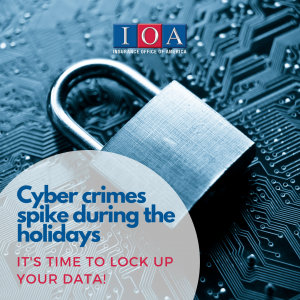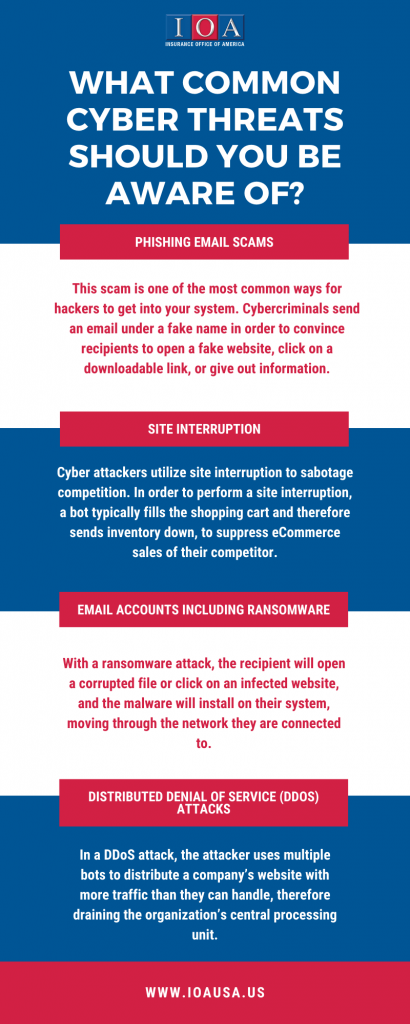 Santa’s not the only one coming down the chimney: Cybercrimes and the holidays (Lock up your data)The holiday season has arrived! And so have the increased levels of crime… holly, jolly right? Wrong. For whatever reason, the holidays tend to bring about increased levels of crime.
Santa’s not the only one coming down the chimney: Cybercrimes and the holidays (Lock up your data)The holiday season has arrived! And so have the increased levels of crime… holly, jolly right? Wrong. For whatever reason, the holidays tend to bring about increased levels of crime.
Due to the elevated amount of email and financial activity during this season, cybercrime reaches new heights. How can you ensure your biggest asset, your data, stays protected this holiday season?
Be aware of common cyber threats.
There are quite a few ways cybercriminals can hack your system. In order to prepare for the attacks, you must know what they look like.
Phishing Email Scams
This scam is one of the most common ways for hackers to get into your system. Cybercriminals send an email under a fake name in order to convince recipients to a variety of things. It can prompt employees to open a fake website, click on a downloadable link, or give out information. Inform your employees of these cyber risks both using the company’s software and their own.
According to Symantec’s 2019 Security Threat Report, almost one in every 400 emails is malicious. Office employees receive hundreds of emails in a week, therefore one of them is bound to be malicious.
Site Interruption
For retailers during Black Friday, Cyber Monday, and other holiday peak ordering days, cyber attackers utilize site interruption to sabotage competition. Cyber attackers perform a site interruption by, first, filling the shopping cart. A full shopping cart sends a message to decrease inventory. This then suppresses the eCommerce sales of competitors.
Email Accounts Including Ransomware
While these sound similar to phishing scams, there are a few key differences. With a ransomware attack, the recipient will open a corrupted file or click on an infected website. Once the file is open, the malware will install on their system, moving through the network they are connected to.
Distributed Denial Of Service (DDoS) Attacks
In a DDoS attack, the attacker uses multiple bots to flood a company’s website with an influx of traffic. This drains the company’s central processing unit. Once the CPU is drained, the attacker requests a ransom in order to stop the attack.
How can you prevent cybersecurity threats?
Connect With Us Today
Make sure all employees are aware and well-equipped to handle a cyberattack
Employee education is the best way to ensure your company’s information remains safe from a cyberattack. Human error is the most common way for cybercriminals to breach your network. In order to mitigate that risk, your employees must know what to look for. Ensure they understand the risks associated with cyberattacks, and what to do if a cybercriminal exploits their vulnerabilities.
Ensure your employees never give out any personal information. Any personal information they give to a cybercriminal can result in identity theft. If they give sensitive information regarding the company, you may be dealing with a data breach.
Make sure you have a cybersecurity strategy in place
Along with employee education, ensure IT gets notified immediately if an incident occurs. If you have a proper plan in place to protect your company, you reduce your risk significantly.
Another aspect of your cybersecurity strategy should include insurance coverage. Protect your digital assets with the proper insurance plan. Contact Roger J Stewart at IOA to help find the specific coverage options your company needs.
Add extra security to your email accounts
As we discussed above, email threats are still an extremely popular attack for cybercriminals. Ensure you protect your email accounts with two-factor authentication, password changes frequently, and proper employee education surrounding opening unfamiliar emails.


